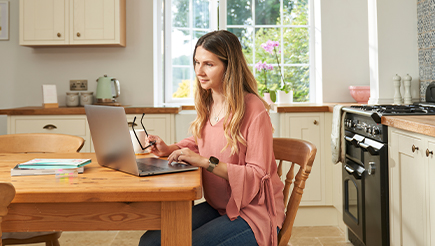If you’re buying a property with the specific intention of letting it out, you won’t be able to fund it through a residential mortgage. And if you already own a property that you want to start renting out, you’ll need to switch to a buy-to-let mortgage.
Buy-to-let mortgages work in a similar way to residential mortgages with a few notable differences Here, AXA’s explains everything you need to know about buy-to-let mortgages.
What is a buy-to-let mortgage?
You’ll need a buy-to-let (BTL) mortgage if you’re buying a property to rent out rather than to live in yourself.
The amount you can borrow is usually based on the expected rental income, with most lenders asking for the rental income to be around 25-30% higher than the mortgage payment. You’ll need a bigger deposit (usually at least 25%) and the interest rates tend to be higher.
Who can get a buy-to-let mortgage?
If you want to become a landlord, and you can’t afford to purchase a property outright, there are certain criteria you must meet to be eligible for a buy-to-let mortgage.
Every lender has different buy-to-let mortgage requirements but most of them will expect you to:
- earn over £25,000 per year
- already own a home yourself
- have a good credit rating
- be younger than 75 when the term ends
How much can I borrow with a buy-to-let mortgage?
The amount you can borrow with a buy-to-let mortgage depends on how much you can realistically expect to earn from your rental payments. Some lenders are more generous than others, but you’ll typically need the rental income to be 25-30% higher than your mortgage payment.
To get a better understanding of your potential rental income, you can browse online property sites or check the local press to find out how much other landlords are charging for similar properties in the area. Speaking to a letting agent can also provide invaluable insight into the local property market.
However, before you sign on the dotted line, your lender might ask for independent verification of your property’s rental value from a surveyor.
How does a buy-to-let mortgage work?
Landlords and prospective landlords can still choose between a repayment and interest-only buy-to-let mortgage. The option you choose will depend on your affordability and what you want to get out of your investment.
Interest-only mortgages are popular with investors because the monthly payments are lower which maximises the rental income and increases your borrowing potential. However, you won’t own the property at the end of the term so you’ll either need to sell it or have a lump sum to buy it outright.
With a repayment mortgage, the monthly payments are higher so you won’t generate as much profit because more of your rental income will go towards the mortgage payments. However, at the end of the term, your debt will be fully repaid and you’ll own the property outright.
If you’re investing in property to generate an income, an interest-only mortgage might be the best option. If you’re investing to own assets that you can pass on, a repayment mortgage might be the better choice. Speak to a mortgage advisor to decide on which option is right for you.
How to switch from a residential mortgage to a buy-to-let?
If you want to rent out your home, you’ll need to tell your mortgage lender. They’ll either grant you ‘consent to let’ or ask that you switch to a buy-to-let mortgage. If your mortgage lender declines your request entirely, you might need to re-mortgage with a new lender which could result in early repayment charges.
Even if you didn’t intentionally set out to become a landlord, for example if you inherit a property or have a change in circumstances, you risk invalidating the mortgage if you don’t tell the lender you plan to rent out the property.
Can I claim tax relief on buy-to-let mortgage interest?
Landlords could previously deduct buy-to-let mortgage interest from their earnings to reduce the income tax they needed to pay. However, new tax relief changes introduced in April 2017 mean that’s no longer the case.
Tax relief is now given as a reduction in tax liability instead of a reduction to taxable income. Landlords must now declare all their rental income, pay income tax on the full amount, and then claim back 20% (or 45% if they’re a higher rate taxpayer) of this as credit.
Find out more about the changes to landlord tax relief here.
Where can I get a buy-to-let mortgage?
You can get a buy-to-let mortgage from most of the big high-street banks. There are also a handful of specialist lenders that offer BTL mortgages.
Comparison websites like Which? or MoneySupermarket can be a good starting point when you’re looking for a mortgage. Browsing their websites will give you a better idea of costs, fees and eligibility. However, when it comes down to actually taking out a mortgage, it’s always a good idea to speak to a professional.
For help choosing a buy-to-let mortgage, you should speak to a professional financial advisor or mortgage broker. The Financial Conduct Authority has a list of regulated mortgage brokers here.


